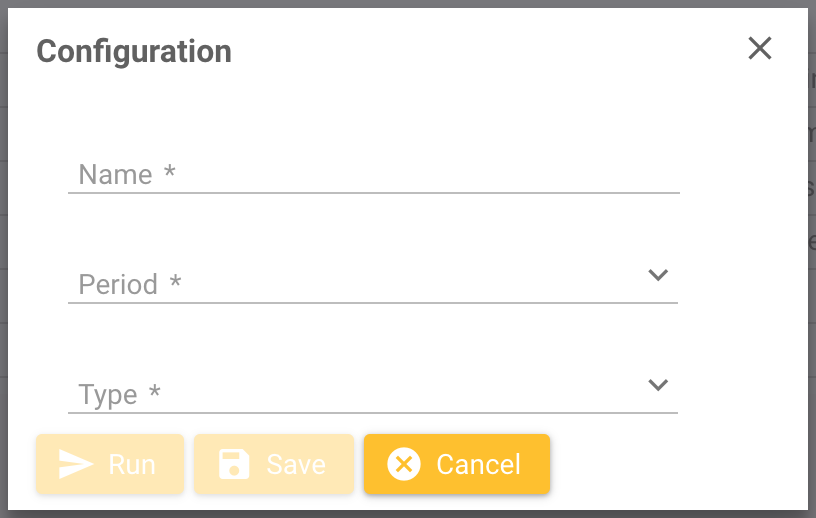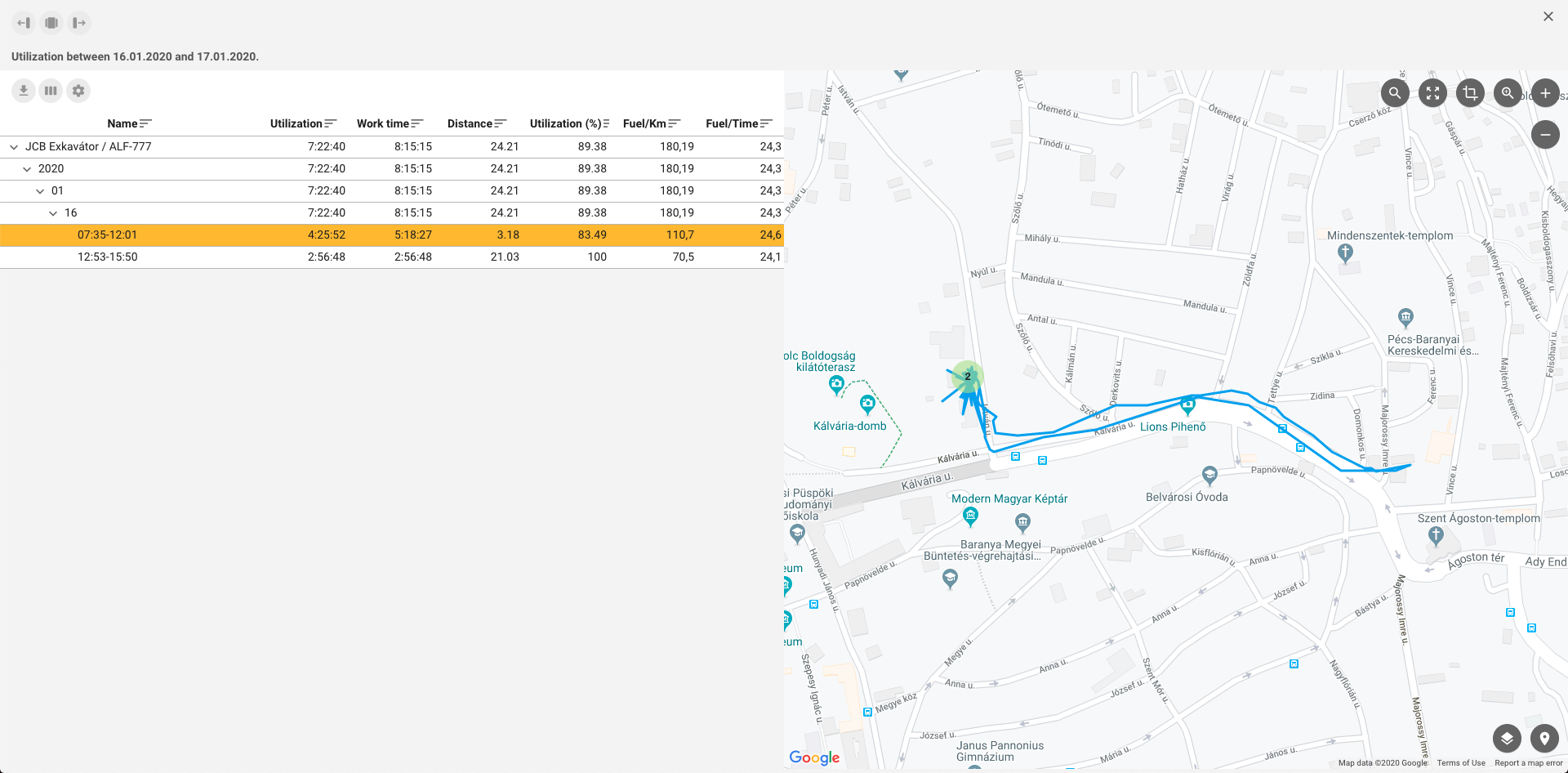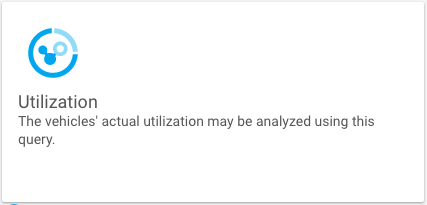Table of Contents
Utilization
Operating conditions
The successful report's prerquisite is that the device must receive a signal via the dedicated port, that is clearly related to the effective work.
Creating the query
Creating the query is simple, after filling in the mandatory fields the query profile can either be run immediately, or saved to the user's query profiles. The mandatory fields are the followings:
- Profile's name
- Period to be reviewd
- Object type

The object may be vehicle or person type.
- In case of vehicle type, the query evaluates the utilization of a particular vehicle,
- In case of person type, it examines the utilization of the machinery or vehicles operated by a specific person.
The result
The query determines the degree of utilization by comparing the duration of a given work day with the duration of the effective work. In terms of the query, the working day means the time spent between the reception of the first ignition coordinate and the reception of the last ignition coordinate on the day. The time spent with effective work is calculated by summing the periods indicated via the digital input used for this purpose. In the light of this information, the utilization rate of a given machine or vehicle during the reviewed period can easily be calculated.

Besides the utlization rate, the result of the query includes the distance traveled during the period under examination, and both the working time and the duration of actual work during the reviewed interval.
A real-life example of how the query works
Let's take a front loader as an example. The port dedicated to the effective work signal, receives the data from the hydraulic pump that operates the loader bucket. The worker turns the ignition on at the beginning of the shift, then starts to use the loader bucket, which is operated by the hydraulics from which the effective work port receives the signal. During lunch time, he stops the machine, and turns the ignition off. After lunch, he turns the ignition on again, then at the end of the shift, parks the loader and turns the ignition off. Since this is the last ignition turn-off that day, thereafter the first data packet received without ignition means the end of the working day.
Now that the lenght of the working day is known, and the summary of the periods spent with effective work is also available, the loader's utilization is easy to calculate.

